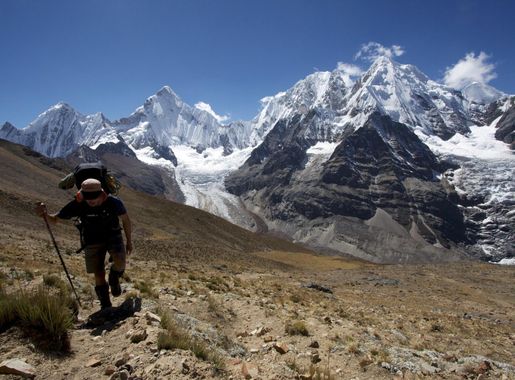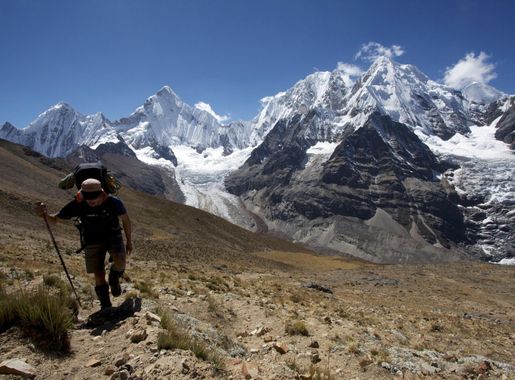
Huayhuash Circuit: A Trekker's Paradise in Peru
Discover the Huayhuash Circuit in Peru: A trekker's dream with stunning landscapes, high-altitude passes, and rich Andean culture. Perfect for those seeking adventure and natural beauty.
The Huayhuash Circuit in Peru is one of the most spectacular trekking routes in the world. Nestled in the Andes, this remote and pristine trail offers breathtaking views of snow-capped peaks, serene lakes, and verdant valleys. The circuit covers approximately 130 kilometers and usually takes about 10 to 14 days to complete, making it a challenging yet rewarding adventure for seasoned hikers. The journey through the Huayhuash Circuit is an immersion in nature. Trekkers will experience diverse ecosystems and encounter a variety of wildlife, including condors, vicuñas, and the elusive Andean fox. The high-altitude passes, some reaching over 5,000 meters, provide panoramic vistas that are unparalleled. Clear, star-studded nights offer a unique opportunity for stargazing, far from the light pollution of cities. Along the trail, hikers will also get a glimpse of traditional Andean culture. Small, remote villages dot the landscape, where locals still practice age-old customs and agriculture. Visitors can interact with the Quechua-speaking communities, which adds a rich cultural dimension to the trek. The Huayhuash Circuit is not just a hike; it's a journey through the heart of the Andes, offering both natural beauty and cultural richness.
Local tips in Huayhuash Circuit
- Acclimatize properly before starting the trek to avoid altitude sickness.
- Hire a local guide for a safer and more informative experience.
- Pack enough warm clothing as temperatures can drop significantly at night.
- Bring a reliable water purification system to ensure safe drinking water.
- Respect local customs and ask for permission before taking photos of people.
Huayhuash Circuit: A Trekker's Paradise in Peru
The Huayhuash Circuit in Peru is one of the most spectacular trekking routes in the world. Nestled in the Andes, this remote and pristine trail offers breathtaking views of snow-capped peaks, serene lakes, and verdant valleys. The circuit covers approximately 130 kilometers and usually takes about 10 to 14 days to complete, making it a challenging yet rewarding adventure for seasoned hikers. The journey through the Huayhuash Circuit is an immersion in nature. Trekkers will experience diverse ecosystems and encounter a variety of wildlife, including condors, vicuñas, and the elusive Andean fox. The high-altitude passes, some reaching over 5,000 meters, provide panoramic vistas that are unparalleled. Clear, star-studded nights offer a unique opportunity for stargazing, far from the light pollution of cities. Along the trail, hikers will also get a glimpse of traditional Andean culture. Small, remote villages dot the landscape, where locals still practice age-old customs and agriculture. Visitors can interact with the Quechua-speaking communities, which adds a rich cultural dimension to the trek. The Huayhuash Circuit is not just a hike; it's a journey through the heart of the Andes, offering both natural beauty and cultural richness.
When is the best time to go to Huayhuash Circuit?
Unmissable attractions to see
Mirador de Rataquenua
Experience breathtaking panoramic views at Mirador de Rataquenua, a top destination for nature lovers in Huaraz, Peru.
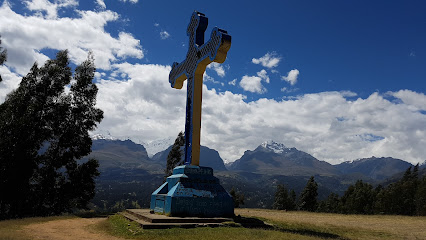
Laguna de Wilcacocha
Experience the serene beauty of Laguna de Wilcacocha, an alpine lake offering stunning views, hiking, and a peaceful retreat in Peru's Andes.
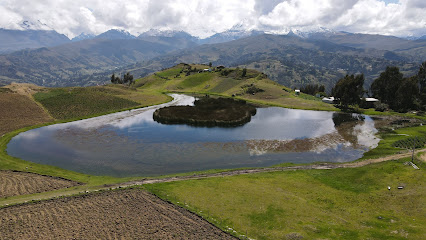
Cordillera Huayhuash
Explore the breathtaking Cordillera Huayhuash, Peru's stunning mountain range, perfect for trekking, photography, and immersing in nature's beauty.
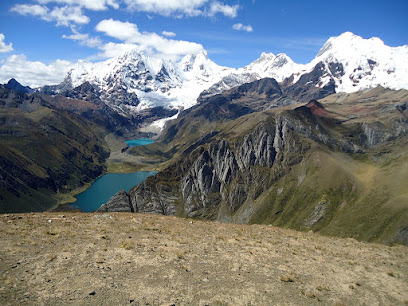
Peruvian Mountains Trek Climb
Discover breathtaking landscapes and rich culture with curated treks in the stunning Peruvian Mountains.

Callejon de Huaylas
Discover the stunning beauty of Callejon de Huaylas, a breathtaking valley in Peru renowned for its majestic mountains and rich cultural heritage.
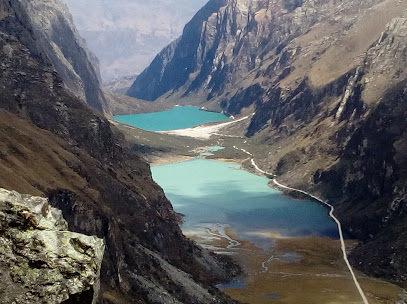
HUAYHUASH TREK PERÚ
Discover the breathtaking beauty and adventure of the Huayhuash Trek, a premier trekking destination in the Peruvian Andes, perfect for nature lovers.

Cuyoc Pass
Discover the breathtaking beauty of Cuyoc Pass, a stunning hiking area in the Andes, perfect for adventure seekers and nature lovers alike.
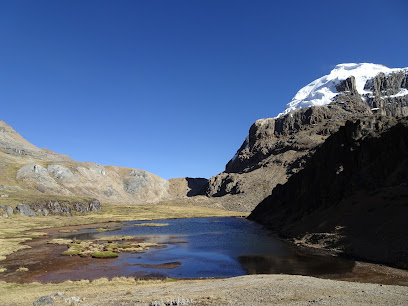
HIGH SUMMIT PERU SAC - Huaraz/Peru
Experience the thrill of rock climbing and breathtaking trekking in the majestic Andes at High Summit Peru SAC, Huaraz's premier adventure hub.
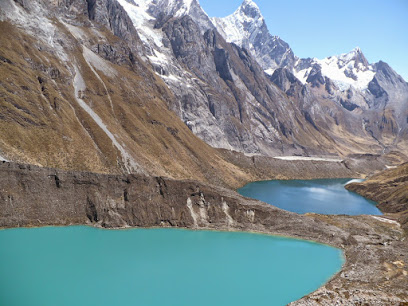
Huayhuash National Park
Discover the breathtaking beauty of Huayhuash National Park in Peru, a hiker's paradise with stunning landscapes and rich wildlife.
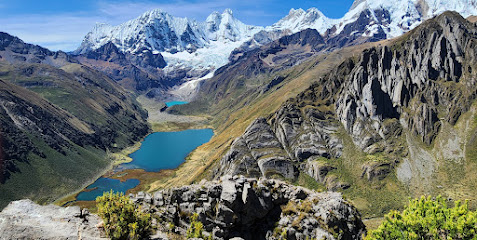
Huayhash
Experience the breathtaking beauty and adventure of Huayhash, a stunning tourist attraction in the Peruvian Andes with rich biodiversity and cultural heritage.
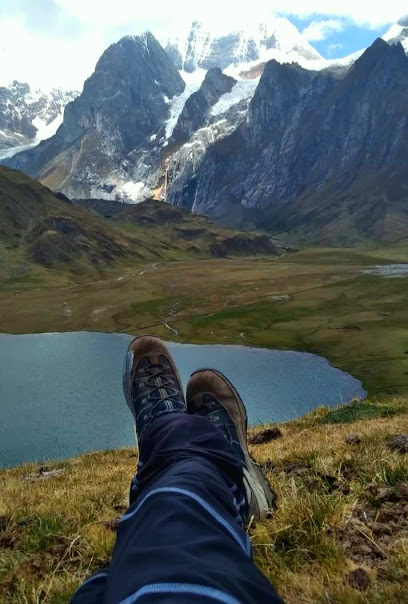
Paso Rasac
Explore the breathtaking hiking trails of Paso Rasac in Peru's Andes, where stunning landscapes and rich biodiversity await every adventurer.
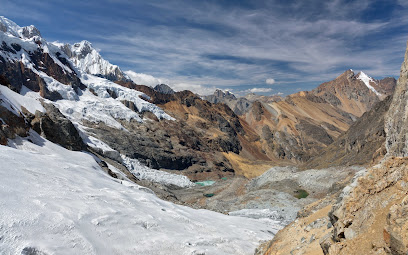
Local Phrases about Huayhuash Circuit
-
- Hello¡Hola!
[Oh-la] - Goodbye¡Adiós!
[Ah-dee-ohs] - Yes¡Sí!
[See] - No¡No!
[Noh] - Please/You're welcomePor favor/De nada
[Por fah-vor/Deh nah-dah] - Thank you¡Gracias!
[Grah-see-ahs] - Excuse me/Sorry¡Perdón!
[Pair-dohn] - How are you?¿Cómo estás?
[Koh-moh es-tahs] - Fine. And you?Bien. ¿Y tú?
[Byen. Ee too] - Do you speak English?¿Hablas inglés?
[Ah-blahs een-glays] - I don't understandNo entiendo
[Noh en-tee-ehn-doh]
- Hello¡Hola!
-
- I'd like to see the menu, pleaseMe gustaría ver el menú, por favor
[May goo-stah-ree-ah ver el meh-noo, por fah-vor] - I don't eat meatNo como carne
[Noh koh-moh kahr-neh] - Cheers!¡Salud!
[Sah-lood] - I would like to pay, pleaseQuisiera pagar, por favor
[Kee-see-eh-rah pah-gar, por fah-vor]
- I'd like to see the menu, pleaseMe gustaría ver el menú, por favor
-
- Help!¡Ayuda!
[Ah-yoo-dah] - Go away!¡Vete!
[Veh-teh] - Call the Police!¡Llama a la Policía!
[Yah-mah ah lah Po-lee-see-ah] - Call a doctor!¡Llama a un médico!
[Yah-mah ah oon meh-dee-koh] - I'm lostEstoy perdido
[Es-toy pair-dee-doh] - I'm illEstoy enfermo
[Es-toy en-fehr-moh]
- Help!¡Ayuda!
-
- I'd like to buy...Me gustaría comprar...
[May goo-stah-ree-ah kohm-prar] - I'm just lookingSolo estoy mirando
[So-loh es-toy mee-rahn-doh] - How much is it?¿Cuánto cuesta?
[Kwan-to kwehs-tah] - That's too expensiveEs demasiado caro
[Es deh-mah-see-ah-doh kah-roh] - Can you lower the price?¿Puede bajar el precio?
[Pweh-deh ba-har el pree-syoh]
- I'd like to buy...Me gustaría comprar...
-
- What time is it?¿Qué hora es?
[Kay oh-rah es] - It's one o'clockEs la una
[Es lah oo-nah] - Half past (10)Media hora (10)
[Meh-dee-ah oh-rah (dies)] - MorningMañana
[Mah-nyah-nah] - AfternoonTarde
[Tahr-deh] - EveningNoche
[Noh-cheh] - YesterdayAyer
[Ah-yehr] - TodayHoy
[Oy] - TomorrowMañana
[Mah-nyah-nah] - 1Uno
[Oo-no] - 2Dos
[Dohs] - 3Tres
[Tres] - 4Cuatro
[Kwah-troh] - 5Cinco
[Seenkoh] - 6Seis
[Seys] - 7Siete
[Syeh-teh] - 8Ocho
[Oh-choh] - 9Nueve
[Nweh-veh] - 10Diez
[Dyehs]
- What time is it?¿Qué hora es?
-
- Where's a/the...?¿Dónde está...?
[Dohn-deh es-tah] - What's the address?¿Cuál es la dirección?
[Kwahl es lah dee-reek-syohn] - Can you show me (on the map)?¿Puedes mostrarme (en el mapa)?
[Pweh-dehs mohs-trar-meh (en el mah-pah)] - When's the next (bus)?¿Cuándo es el próximo (autobús)?
[Kwan-doh es el proh-see-moh (ow-toh-boos)] - A ticket (to ....)Un boleto (a ...)
[Oon boh-leh-toh (ah ...)]
- Where's a/the...?¿Dónde está...?
History of Huayhuash Circuit
-
Long before modern trekkers set foot on the Huayhuash Circuit, the region was home to indigenous groups such as the Chavin and later the Incas. Their presence is evidenced by archaeological finds, including ancient paths, terraces, and ruins scattered throughout the mountains. These early inhabitants adapted to the harsh, high-altitude environment and developed a rich culture that still influences the local communities today.
-
The arrival of Spanish conquistadors in the 16th century brought significant changes to the Huayhuash region. The Spanish sought to exploit the area's mineral wealth, particularly silver, which led to the establishment of mining operations. The indigenous populations were subjected to forced labor under the encomienda system, leading to significant social and economic upheaval. Despite this, some aspects of the pre-Columbian culture persisted and are still visible in the region today.
-
The 20th century saw an increase in interest from international mountaineers and explorers. The first recorded ascent of one of the Huayhuash peaks, Yerupajá, was accomplished in 1950 by a German-Austrian expedition. This period marked the beginning of the Huayhuash Circuit's reputation as one of the world's most challenging and rewarding trekking routes. The influx of climbers and trekkers brought new economic opportunities to the local communities, although it also raised concerns about environmental impact.
-
During the 1980s and 1990s, the Huayhuash region was affected by the internal conflict between the Peruvian government and the Shining Path, a Maoist guerrilla group. The conflict resulted in violence, instability, and economic hardship for the local populations. Many areas were considered unsafe for travel during this period. However, the situation has improved significantly since the late 1990s, and the region has once again become a popular destination for trekkers and adventurers.
-
In recent years, there has been a growing focus on conservation and sustainable tourism in the Huayhuash Circuit. Local communities, NGOs, and government agencies have collaborated to protect the unique environment and cultural heritage of the region. Initiatives include the establishment of protected areas, eco-friendly trekking practices, and community-based tourism projects that ensure benefits are shared with local inhabitants. These efforts aim to preserve the Huayhuash Circuit for future generations while providing sustainable livelihoods for its residents.
Huayhuash Circuit Essentials
-
The Huayhuash Circuit is located in the Andes of Peru. The nearest major city is Huaraz, which is well-connected by road to Lima, the capital of Peru. From Lima, you can take a bus to Huaraz, a journey that typically takes around 8-10 hours. Alternatively, you can fly from Lima to Anta Airport near Huaraz, and then take a taxi or bus to Huaraz. From Huaraz, various tour operators offer transport to the starting point of the Huayhuash Circuit.
-
Transportation within the Huayhuash Circuit is primarily by foot, as it is a trekking route. However, mules can be hired to carry heavy gear. In Huaraz, taxis and colectivos (shared vans) are the primary modes of transport. Buses also operate between Huaraz and smaller towns near the circuit. Make sure to arrange your transportation in advance, especially during peak trekking seasons.
-
The official currency in Peru is the Peruvian Sol (PEN). While credit cards are accepted in Huaraz and some larger establishments, it is advisable to carry cash, especially when trekking the Huayhuash Circuit, as there are no ATMs or card facilities on the trail. Ensure you withdraw enough cash in Huaraz before starting your trek.
-
The Huayhuash Circuit is generally safe for tourists, but it is crucial to take standard precautions. Always trek with a group or hire a local guide. Be cautious of your belongings, especially in crowded areas like bus stations. There have been occasional reports of petty theft, so it's best to stay vigilant. Avoid trekking alone and always inform someone of your trekking plans.
-
In case of emergency, the local emergency number in Peru is 105. For medical emergencies, the nearest hospitals are in Huaraz. It is highly recommended to have comprehensive travel insurance that covers high-altitude trekking and medical evacuation. Carry a basic first aid kit and know the symptoms of altitude sickness. Local guides are also trained in basic first aid and emergency procedures.
-
Fashion: Do wear appropriate trekking gear, including sturdy boots, layered clothing, and sun protection. Avoid wearing flashy jewelry or expensive items. Religion: Do respect local customs and traditions, especially when passing through villages. Always ask for permission before taking photos of people. Public Transport: Do be respectful and patient when using public transport. Don't expect English to be widely spoken, so knowing basic Spanish phrases can be helpful. Greetings: Do greet people with a simple 'Hola' or 'Buenos Días.' A friendly nod is also acceptable. Eating & Drinking: Do try local foods like 'Cuy' (guinea pig) and 'Pachamanca' (a traditional Peruvian dish). Don't drink tap water; always opt for bottled or purified water.
-
To experience the Huayhuash Circuit like a local, consider staying in community-run campsites, which also benefit the local economy. Engage with local guides who can provide insights into the region's history, culture, and natural features. Visit local markets in Huaraz to buy fresh produce and traditional Peruvian goods. Don't miss the opportunity to learn about the Andean way of life from the villagers you meet along the way.
Nearby Cities to Huayhuash Circuit
-
Things To Do in Lima
-
Things To Do in Huancayo
-
Things To Do in Trujillo
-
Things To Do in Ayacucho
-
Things To Do in Ica
-
Things To Do in Chiclayo
-
Things To Do in Machu Picchu
-
Things To Do in Cusco
-
Things To Do in Piura
-
Things To Do in Loja
-
Things To Do in Iquitos
-
Things To Do in Cuenca
-
Things To Do in Macas
-
Things To Do in Arequipa
-
Things To Do in Guayaquil

